COMMENT:
On Thursday, 2 January 2014, 17:07, William ... wrote:
Dear Father Donald,
I am delighting in your blog entry for the feast of the Holy Name of Jesus, and followed the link you provided:
history of the 'Monogram for the Holy Name' (that is a little further down the page).
'IHS' - sent me searching amongst my 'buttons & badges' collections of medallions, found on market
stalls over past years and, sure enough, there were two (see attached photos - front / back).
What a wonderful reflection this feast will add to the prayer to 'Our Father, Hallowed be Thy Name...'
Thank you for again taking me deeper into the mystery of the Holy Name of Jesus.
If I might find an old oak tree that I could carve this Name for all who pass by...
... in Our Lord,
William
+++++++++++++++++++++++++++++++++++++++++++++++++++++++
HE AND i, Gabrielle Bossis
1937
December - 24 - Midnight
Mass.
"Enjoy it. Nothing must be
lost of what I suffered for you in My passion. Bring everything into the inner
stillness. Offer Me to Myself. "
I was in spirit inside the
wounds of His hands and as I was astonished to find myself entirely
enclosed, He said to me,
"My wounds can hold the entire
world. Stay there
(on His heart),
Say nothing. Let us exchange our
sufferings and love in secret. . . I live you. My child, live Me. "Christmas
- "Don't you live enfolded in Love? Give
Me all. Everything. . . Love Me. Make amends for all the ways others
are going to offend Me tonight. "
 |
| St.-John-and-Jesus-at-the-Last-Supper |
December - 27 - Feast
of St. John, who leaned on His heart.
"Tell Me that
with every breath of yours you breathe the love of My heart. What
priceless treasure for you!"
1942
Feb 12 ; Let your ear always be on the alert to
listen to Me. You will hear. When John leaned on My heart, he heard
its secrets. If he had not shown me this gesture of tenderness, would
he ever have heard? I am like the shy person - I
have to wait for you to make the first move."
1945
December 27 - "If
you have to make sacrifices to reach Me, don't worry about them. I'm in you. I’ll
shoulder their weight. If you find no words to express your love, keep silent
and I in you will speak to Myself. If you can't keep your thoughts on
Me, come back to Me as soon as you notice this, gently, without bitterness
against yourself. Since I can put up with you, you can surely put up
with yourself. Transmute this into an opportunity of being humble. Oh,
never miss one of such blessed opportunities. My little girl humble. . . What
a joy for Me!
You understand, I see
all that's going on inside you. I can fathom you. Don't parents see right through
their little child? And I. . . Shouldn't that hearten you? Shouldn't it
help your inner life? I'm at rest in your soul.
At the beginning of
Creation, God walked in the Garden of Eden and talked with your first
parents. There was God and there was man. Now it is the God - Man, and He
is in you, still nearer, since He took on human nature. What oneness, My child!
Think of it. If you understood better, your heart would melt with love. "
"Lord, give me
the grace to understand better. "
"Ask St. John
to help you. It's his feast day today. Although I left him on the day of
My ascension, he went on living with Me right to the end of his life
on earth. Ask him for the tender faithfulness that won so much light for him. And
trust. "
1948
May - 27 - Corpus Christi. -
"Lord, I want so much to work for "Your desires."
"Take your place near Me where John is as I invent My Eucharist.
Look at My happiness. I seem to forget even My fearful passion that is
about to begin, so completely am I engulfed in the love of man.
Not just the Eleven, but all the people to come, even to the very last at the
end of time. You understand, it's as though I took everyone - all
of you - in My body, promising you to be
members of it. The thirst for union with you is so great that I
want to be consumed by you in order to merge our minds, our beings. I
want to be your thinking and your doing.
Such love amazes you, and yet you can
guess at only a very faint part of it. Does the flame of a torch give
any idea of a conflagration?
There, near Me, in John's
place, are you aware of My deep joy at having found a way of remaining among
you - all of you who were not there
that evening at the Last Supper. You whom I already love so much that I
am ready to die a shameful death for you. You whose entire life
will be accompanied by My Hosts, and whose death will be the sweeter
for them.
And from your place - John's place - see how the apostles have already become
new men – gentle and fervent. They believe. They possess Me. I already act
in them as I shall act in you.
Can I be present and not make your cup
of blessings overflow? Who is as rich as I? Who could desire your
highest good more than I? Then help Me to fulfil this desire by
asking the Father that all people allow Me to have My own way in
them. If only they would consent to let Me come in. They are afraid to
be seen. They have no time for anything but business; they have none for
Me. They don't believe and they don't think about these things. They are
scornful. Others believe, but hate Me and basely persecute all that they
can in the ciborium.
You, My faithful friends, surround Me;
adorn My tabernacles; comfort Me; respond to Love, in life, in death; wish
to remain longer on earth in order to love Me the longer there. Others will
come after you, but who will replace you? For Me each of you has a
face, a path. Keep your face before My face and hasten along your
path."
COMMENT:
Various Community Refectory pictures of the Last Supper.
1.
+Dublin.jpg) |
| Dublin - refectory. |
 |
| Fontani (Italy) Last Supper renditions, polymer/wood/resin. |
 |
| Edinburgh - Gillis Centre |
 |
| Hand-painted Plaque, Last Supper, abbey guest house. |
 |
| Carved plaque - Carlisle shop |
 |
| Ireland - Abbey community room |
 |
| Co. Dublin - Refectory |
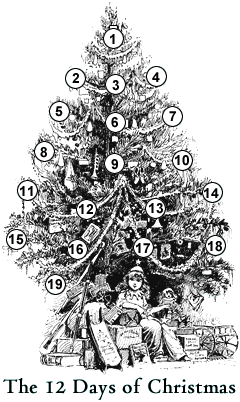

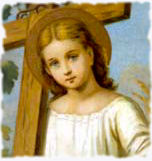 The name of Jesus is a name of gladness, a name of hope and a name of love. A name of gladness, because if the remembrance of past transgressions afflicts us, this name comforts us, reminding us that the Son of God became man for this purpose, to make himself our Savior.
The name of Jesus is a name of gladness, a name of hope and a name of love. A name of gladness, because if the remembrance of past transgressions afflicts us, this name comforts us, reminding us that the Son of God became man for this purpose, to make himself our Savior.



+Dublin.jpg)




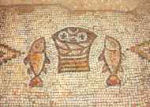 of the Holy Name o Jesus
of the Holy Name o Jesus
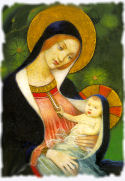

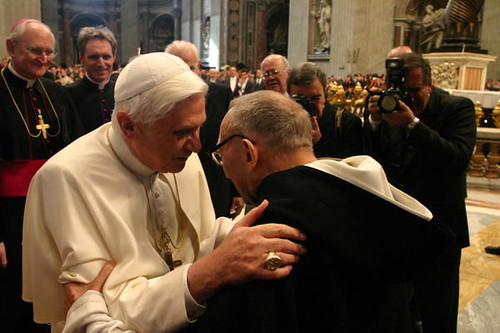

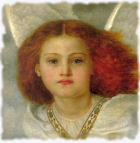


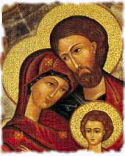 Today is the feast day of the Holy Family, but also every family's feast day, since the Holy Family is the patron and model of all Christian families. Today should be a huge family feast, since it is devoted entirely to the Holy Family as a model for the Christian family life. As Rev. Edward Sutfin states:
Today is the feast day of the Holy Family, but also every family's feast day, since the Holy Family is the patron and model of all Christian families. Today should be a huge family feast, since it is devoted entirely to the Holy Family as a model for the Christian family life. As Rev. Edward Sutfin states: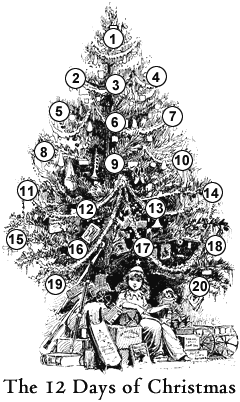
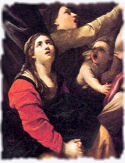 The Holy Innocents saved the Child Jesus from death by King Herod by the shedding of their own blood. The Holy Innocents are the special patrons of small children, who can please the Christ Child by being obedient and helpful to parents, and by sharing their toys and loving their siblings and playmates.
The Holy Innocents saved the Child Jesus from death by King Herod by the shedding of their own blood. The Holy Innocents are the special patrons of small children, who can please the Christ Child by being obedient and helpful to parents, and by sharing their toys and loving their siblings and playmates.